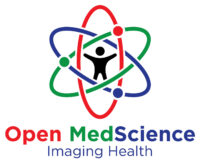Substance abuse is a complex issue affecting millions worldwide, posing challenges not just for the individuals struggling but also for their families and communities. Recovery is a multifaceted journey, often necessitating a structured intervention in the form of rehabilitation. These programs offer guidance, support, and strategies for long-term sober living, proving essential in breaking the chains of addiction. Fully understanding the role that rehabilitation programs play in the recovery process is crucial for anyone touched by substance abuse. Below, we look into how these programs work, their benefits, and their success in fostering enduring change.
Integrating Therapy and Support Systems in Rehab Programs
The integration of therapy and support systems is central to the design of effective rehabilitation programs. Therapy, both individual and group-based, allows clients to confront their addiction in a supportive, non-judgmental setting. Therapists work closely with clients to explore the root causes of their addictions and to develop healthier coping mechanisms.
Support systems play an equally crucial role. They create a network of peers and professionals who understand the intricacies of addiction and provide emotional backing and accountability. Family involvement is also a significant component, as repairing relationships and building a strong foundation at home can be pivotal for successful recovery.
For those seeking a serene environment to focus wholly on recovery, facilities such as Prospect Drug Rehabilitation offer comprehensive programs in a therapeutic setting. Their focus is on not only treating the addiction but also on preparing individuals for a return to daily life with the strength and support needed for lasting recovery.
The Different Types of Rehabilitation Programs for Substance Abuse
There is no one-size-fits-all when it comes to recovery. Rehabilitation programs vary in intensity, setting, and approach, ranging from inpatient facilities, where individuals reside during their treatment, to outpatient programs that allow patients to maintain certain aspects of their daily lives. Each type caters to different severity levels of substance abuse and personal circumstances.
Inpatient programs provide a safe, structured environment free from the pressures and triggers of everyday life. The immersive nature of these programs promotes an intense focus on recovery, especially within a luxury drug rehab setting that emphasizes privacy, comfort and comprehensive support. Conversely, outpatient programs offer more flexibility, allowing individuals to attend therapy sessions while living at home, a model that suits those with less severe addictions or strong support systems in place.
Long-term residential programs offer extended care and are suitable for deep-seated addiction cases, requiring a longer time to heal both physically and emotionally. Therapeutic communities are another form, focusing on the ‘resocialization‘ of the individual and leveraging group support. Alternative programs also exist, such as wilderness therapy, which employs unique methods to reach the same ends.
How Rehabilitation Programs Aid in Long-Term Recovery
Rehabilitation programs are not a quick fix but a fundamental step towards long-term sobriety. They provide the foundation upon which individuals can build a sustainable recovery. Through structured programming, patients learn to identify triggers, develop coping strategies, and build a support network, all of which are critical for maintaining sobriety after the program ends.
The journey does not conclude upon leaving the rehab facility. Recovery is an ongoing process, and many programs offer aftercare planning to ensure continuity of support. This may include ongoing therapy, support groups, or sober living arrangements that provide a transitional space for individuals re-integrating into daily life.
Lifetime recovery is bolstered by continuous personal development and growth. Rehabilitation programs often encourage participation in holistic activities such as yoga, meditation, or exercise to promote overall well-being. This integration of physical health serves to support the emotional and psychological recovery process.
Measuring the Success of Rehabilitation in Substance Abuse Recovery
The metrics of success in substance abuse recovery can be both quantitative and qualitative. Reduced relapse rates, improved mental and physical health, and higher rates of employment or educational attainment post-rehabilitation are tangible measures. However, the subjective improvements in the quality of life, relationships, and personal satisfaction are equally significant indicators of progress.
Continuous measurement of these outcomes is vital to understand the effectiveness of rehabilitation programs. It also provides valuable feedback, which can be used to enhance treatment approaches and tailor individual care plans. Success is also seen in the development of a positive, drug-free identity and the re-establishment of meaningful societal roles.
Overall, rehabilitation offers a beacon of hope, providing the necessary structure, therapy, and support systems crucial for overcoming substance abuse. As each journey is unique, measuring success through a multitude of lenses reflects the comprehensive nature of true recovery. With the right rehabilitation program, individuals are not just surviving but thriving, free from the chains of addiction, and equipped for a brighter future.
Disclaimer:
The information provided in this article is for general informational and educational purposes only and is not intended as a substitute for professional medical advice, diagnosis, or treatment. Open MedScience does not provide medical, clinical, or therapeutic services, and the inclusion of any organisation or facility does not constitute an endorsement or recommendation. Always seek the advice of a qualified healthcare provider with any questions you may have regarding a medical condition or treatment options. Never disregard professional medical advice or delay in seeking it because of something you have read on this website. If you or someone you know is struggling with substance abuse, please consult a licensed healthcare professional or contact an appropriate support service.




